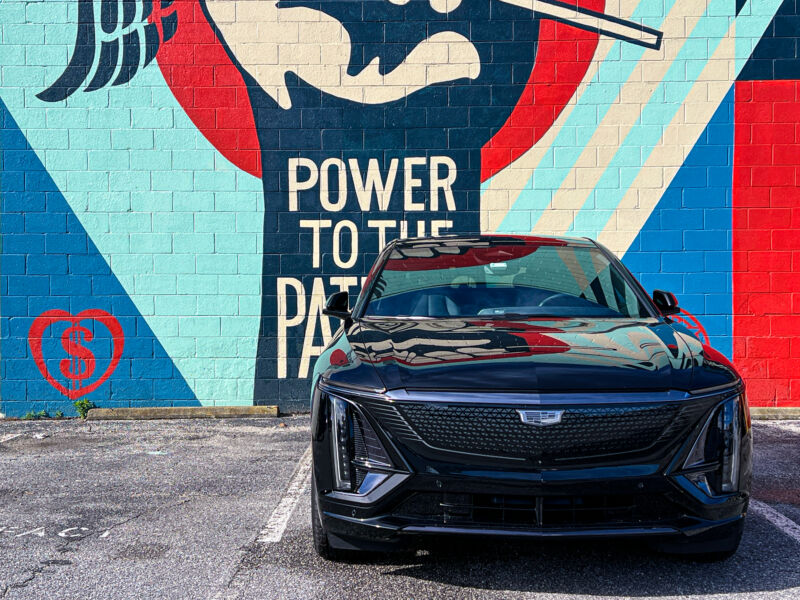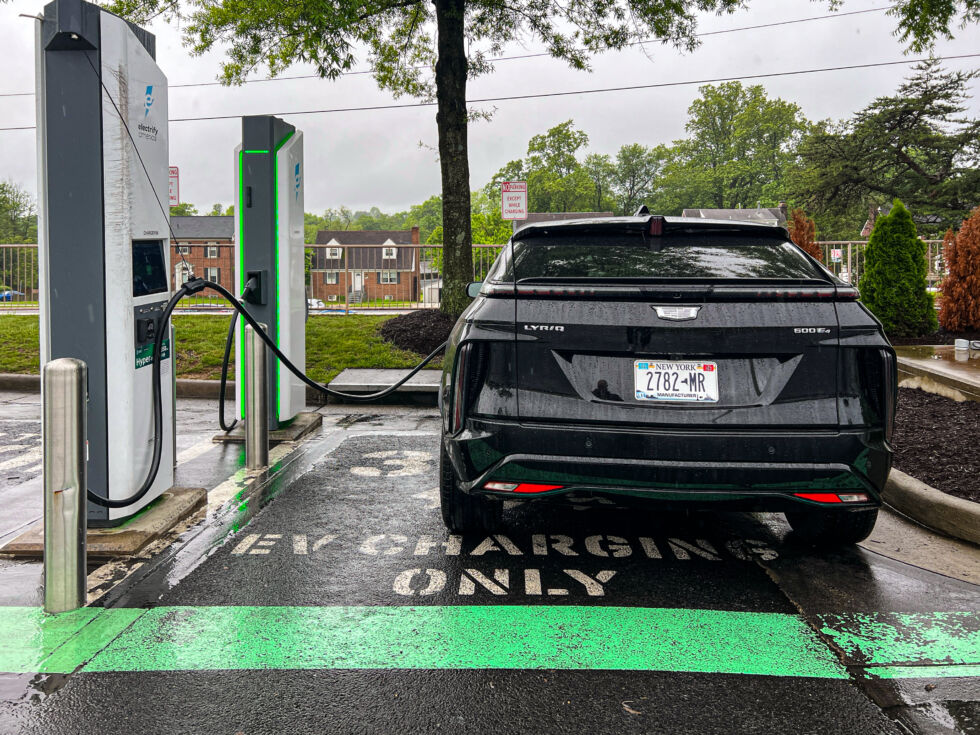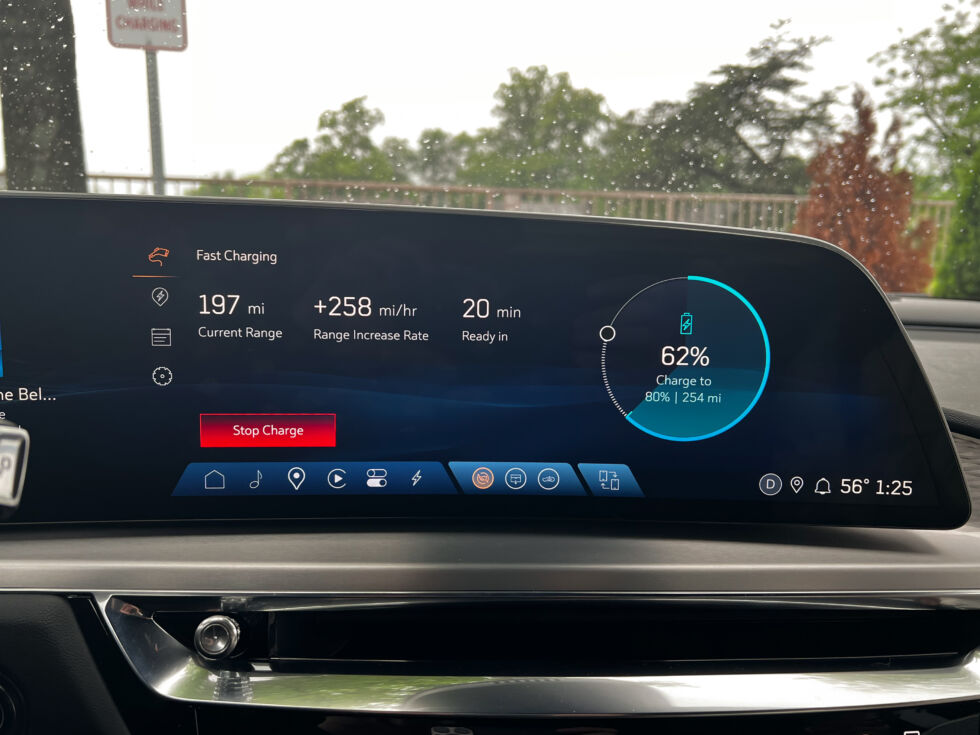
Jonathan Gitlin
We first drove the Cadillac Lyriq a couple of years ago. It was the first of a whole range of new electric vehicles from General Motors built on shared electric powertrain components. Compared to more recent Ultium-based EVs from GM, the Lyriq launch went relatively smoothly, despite pre-production test vehicles. Hype was so great that Cadillac was said to have increased the first year’s production run by almost a factor of 10.
But customers faced a long wait for their orders as the company stumbled at the step where cells get turned into battery packs. Now the production kinks have been worked out, and Lyriqs are becoming a more common sight. So it seemed like a reasonable time to check in on the electric Caddy.
We’ve written quite a lot in the past about the Lyriq’s Ultium powertrain, so I won’t repeat too much detail here. For model-year 2024, the underpinnings remain the same, although our test car is an all-wheel-drive version. (Cadillac only had the rear-wheel-drive variant at the first drive in 2022.) There are a pair of new trims, Tech and Sport—this test car was the top-of-the-line Sport 3, with a $78,295 sticker price (including delivery charge).

Jonathan Gitlin
Not memorable to drive
In day-to-day life, the Lyriq driving experience was frankly unmemorable. There isn’t quite the same sense of sitting atop a ton of batteries like there is in the near-identical Acura ZDX, but despite the Sport trim level and the presence of a Sport drive, this isn’t an EV that makes me want to take the long and twisty way home.
For the mundanities of everyday life—driving to work, going to get groceries, giving someone a ride—it does better. There are no objectionable blind spots from the driver’s seat, and it has a full suite of advanced driver assistance systems to watch out for things like other cars when you’re backing out of a space, or cyclists and pedestrians. The automatic braking system when in reverse can be a little eager, a trait I’m noticing across a few different brands these days.
Testing the Lyriq in May revealed all-wheel drive added little other than reduced range efficiency, which averaged 2.9 miles/kWh (21.4 kWh/100 km). The 22-inch wheels probably don’t help much either. I’m not sure I’d opt for the $3,500 AWD option versus having a dedicated set of wheels fitted with snow tires.
I remain a fan of the steering wheel paddle that allows you to toggle through increasing levels of regenerative braking, but even set to off there’s still a degree of regen that will slow you down when you lift your foot from the throttle pedal to try to coast. With this EV, one-pedal driving is the way to go for better efficiency, even on the highway.

Jonathan Gitlin
DC fast-charging was painless, taking just under 28 minutes to get from 44 to 79 percent state of charge at an Electrify America charger rated for 350 kW. Lyriqs can’t take full advantage of that, maxing out at 190 kW, as the pack only operates at 400 V. For my session, which delivered 44 kWh, the peak charging rate was 144 kW.
